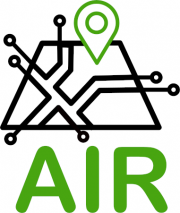Objective
The overall objective of the AIR project is to contribute to a more sustainable tourism development by equalising visitor flows. Specifically, AI-based procedures are to be researched, developed, implemented and evaluated that help to avoid the temporary congestion of travel and excursion destinations through targeted visitor information and to identify suitable alternatives.
Content
In the project, the core elements of a visitor management system (frequency measurement, data provision, modelling/alternative generation and touchpoint management/deployment) are described and conceptualised and then implemented in six use cases for application research, investigated in terms of integration capability (Smart Destination Integration) and evaluated. The use cases are located in the Allgäu, in the Ruhr area, in the Sauerland and on the North Sea and Baltic Sea coast of Schleswig-Holstein. This means that a broad spectrum of destination types are taken into account in the project.

Artificial intelligence (AI) methods are used at various points in this project, such as in the use of smart sensors for frequency measurement, in the modelling and forecasting of utilisation scenarios and in the generation and playout of recommendations to users.
The Corona pandemic has brought forth the first approaches of digital, frequency-based visitor management systems. However, these isolated solutions do not meet the principles of an integrated digital tourism visitor management system. The task of the project is to design and evaluate such integrated systems through applied research measures.
Work plan
The work plan of the project is designed in two dimensions: In the first dimension, the elements of a digital visitor management system (frequency measurement, data provision, modelling/alternative generation, touchpoint management/deployment, smart destination integration and evaluation) are developed and elaborated as independent work packages and implemented in the second dimension, the six use cases, and researched with regard to their effectiveness. This results in a work plan with a matrix of research and development tasks on the one hand and application tasks in the use cases on the other.
This work plan ensures that research and development tasks can be worked on independently on the one hand, but on the other hand that there is a constant feedback with the practice partners, so that the elements of the visitor management system can be checked with regard to their effectiveness.
